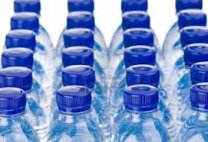Bottled water Environmental Issues
• The federal government requires far more rigorous and frequent safety testing and monitoring of municipal drinking water than of bottled water.
• The Food and Drug Administration (FDA) regulates only the 30 or 40 percent of bottled water sold across state lines. FDA regulations also exempt carbonated bottled water.
• The FDA has less than one full-time employee to oversee bottled water.
• The FDA requires that companies test for bacterial contamination in water only once per week, and they must test only four empty bottles once every three months for bacterial contamination. When it comes to chemical, physical, or radiological contaminants, a sample of water must be checked only once a year.
• The FDA does not test bottled water for phthalates like DEP—a chemical that is used to produce plastics water bottles and which is also a potential cancer agent in humans.
• Chemical from the plastic bottles can leach into the water.
• According to a Natural Resources Defense Council (NRDC) study of 103 bottled water brands, about one-quarter of the brands tested contained bacterial or chemical contamination in some samples at levels that violated “enforceable state standards or warning levels.”
• The NRDC study found one-fifth of the tested brands “exceeded state bottled water microbial guidelines in at least some samples.”
• The federal Environmental Protection Agency requires that water systems serving more than one million residents test 300 water samples per month, while utilities serving three million people or more must collect and test 480 samples monthly, far more than the once–a–week test for bottled water.










